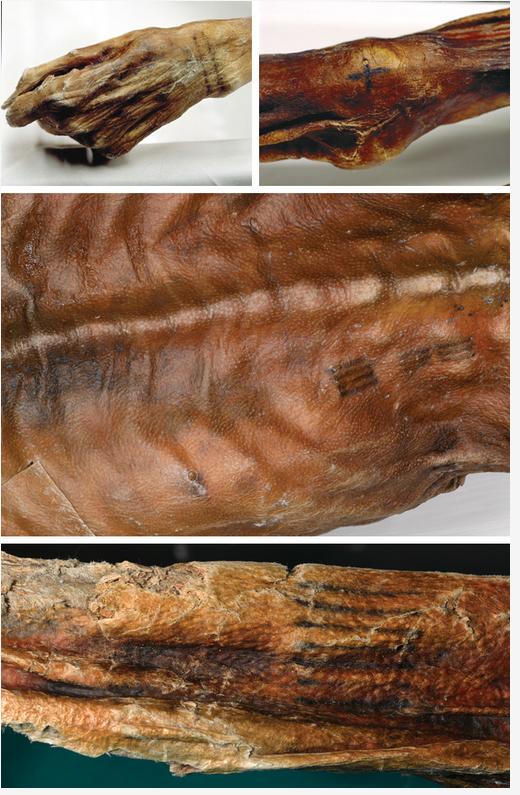Ancient Tattoos Could Have Been Used To Heal People
Oct 23, 2013 19:13

While this might first look like just a piece of beef jerky, but it's actually the skin of 'Ötzi the Iceman', a well-preserved natural mummy of a man who lived about 3,300 BCE. The mummy was found in September 1991 in the Ötztal Alps (hence the name). And he was covered in skin ink.
So what's with the tattoos on Ötzi? One article over at Archaeology magazine indicates that they might have been considered as early medicine since they was inked in specific areas where Ötzi's body parts had been aging:
Ötzi’s clothing, tools, and weapons are a remarkable window into the life of a herder or perhaps a chieftain in Copper Age Europe. But it is Ötzi’s body itself, almost perfectly preserved by the snow and ice that covered him shortly after his death, that provides unique evidence of early medicine. Ötzi is covered with more than 50 tattoos in the form of lines and crosses made up of small incisions in his skin into which charcoal was rubbed. Because they are all found on parts of the body that show evidence of a lifetime of wear and tear—the ankles, wrists, knees, Achilles tendon, and lower back, for example—it’s thought that Ötzi’s tattoos were therapeutic, not decorative or symbolic. When Ötzi was first studied, archaeologists were shocked because they had never before seen Copper Age tattoos, and because acupuncture as a treatment for joint distress, rheumatism, and arthritis was thought to have originated in Asia more than 2,000 years later.
It's also possible Ötze's people believed those regions of the body were spiritually significant, but the coincidence is definitely uncanny. Read more via Archaeology magazine.






































































